Free website spells to engorge your traffic + turn your brand into gold
categorie(s)
Hola chica, I'm Ami.
welcome to the blog
Ami is a creative copywriter and the proud owner of Ami Writes. She’s been casting wordy spells for over 7 years and transforming businesses into brands is her speciality. Ami’s high-key obsessed with Harry Potter and Disney - something that has seeped its way into her own brand.
Branding 101: A Beginner’s Guide to Crafting Your Unique Brand was written by Steph Honey, owner, and founder of Dear Charlie.
As you probably already know – especially if you’re following Ami Writes on Instagram, we do a whole lot of work together. So, she’s graced us with her knowledge about branding. If you were looking for a guide to crafting your unique brand, you’ve landed in the right place.
So, Steph. Over to you!

Branding 101: a welcome
Welcome to “Branding 101” A Beginner’s Guide to Crafting Your Unique Brand! In today’s fast-paced and highly competitive business world, having a strong and recognisable brand is essential for success.
Whether you’re a small business owner, freelance, or just starting out on your entrepreneurial journey, this guide will provide you with the knowledge and tools you need to create a brand that stands out, and that resonates with your audience.
From defining your target audience, and developing a unique brand voice to creating a cohesive visual identity, and everything in between – we’ll cover all the branding bits and bobs you need to know to get started on your branding journey.
So grab a cup of coffee, and let’s dive in!
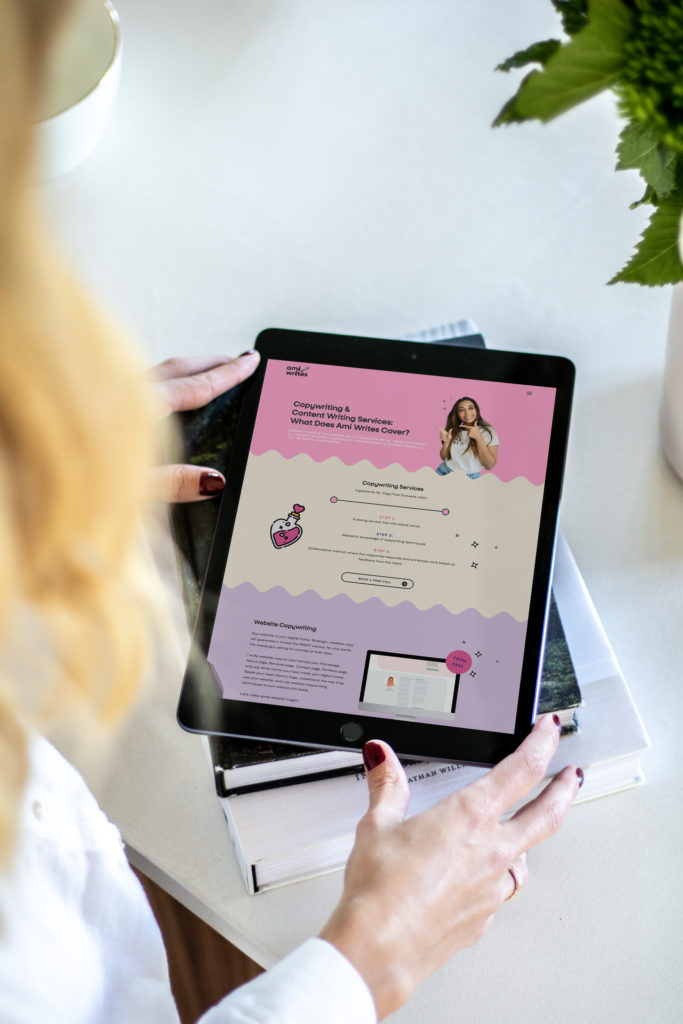
Defining your target audience
Defining your target audience is an essential element of building a successful brand. It’s critical you get to know them to launch a successful marketing or branding campaign.
Your target audience should be a specific group of people who are likely to be interested in your products/services. You want to reach and engage them through your marketing and branding efforts. So it makes sense that you should get to know them before you start.
By researching and understanding exactly who your target audience is, you can create meaningful connections and efforts that are tailored to their specific needs and interests, giving you a greater chance of success.

Researching Your Audience
Now, I bet you’re thinking “that’s all well and good Steph, but how do I actually know who my target audience is?”
Well, there are a few ways I recommend you go about finding out:
- Demographics:
Consider their age, gender, income, education, and occupation – the basic bits. - Psychographics:
Look at their lifestyle, values, interests, and personality traits they possess. - Buying habits:
How often do they make a purchase? How much are they willing to spend? What types of products/services are they most likely to purchase? - Pain points:
Think about what problems or challenges they may be facing and how your products/services can help to solve them. - Location:
Now, I don’t mean where they’re physically situated. It’s more “will they be found online or offline?” - Research:
Make sure you have conclusive evidence to back up your target audience and – you guessed it – that means research.
Use surveys, focus groups, and online polls to gather information about them. - Audit:
Keep track of your target audience and their life. As you grow, so will your audience, and it’s good practice to make sure your branding and messaging stay relevant and effective.
So, there we have it. By identifying the above characteristics of your ideal customers, you can create a detailed profile of your target audience and use it to create effective messaging and branding that will resonate with them.
But I bet you’re wondering “how do I define my target audience’s needs and wants?”
Still don’t get it?
I’ve got you…

Understanding my target audience’s needs and wants
You guessed it, I’ve put together this handy guide on how to define your customers’ needs and wants.
The reason why it’s so important to understand what our audience wants and needs is because it helps us create a more successful brand.
Here are some tips to help you figure out what your audience wants:
1. CONDUCT MARKET RESEARCH
As above, you can use this fantastic tool to understand exactly what your audience is looking for. Use surveys, polls on social media – you can even do an “Add Yours” on Instagram. This is where you post a photo and people then proceed to “add theirs” too. Eventually, you’ll end up with a chain of photos and in-depth insight into your audience’s life. Nifty, hey!
2. EXPLORE YOUR COMPETITION
What do your competitors have to do with your audience? Well, chances are if they’re your competitor they’re looking to work with the same people as you are.
So it makes sense to look at what your competitors are offering and how they position their products/services to meet the needs of their audience.
Is there anything they are doing better or worse at? Identify the gap so you can bridge it with your brand.
3. GET CUSTOMER FEEDBACK
Pay attention to your existing clients. They liked you enough to invest in your offerings, after all. What did they love about your products/services? Was there any room for improvement?
Do you have Google reviews, trust pilots, and so on? In essence: what are people saying about your business?
4. USE SOCIAL MEDIA
I’m sorry to be the bearer of bad news but if you’re not already on social media then you need to be. Whether you’re a B2B or B2C brand, your audience is out there and we can learn so much about how our audience through social media.
How they behave, who they spend their time engaging with, and so on. This will also give you an idea as to what their pain points are.
5. IDENTIFY TRENDS
Now, this might seem like a strange one, but staying up to date on your industry trends can help you understand how they’ll impact your target audience’s needs and wants.
All of these things can help you understand your target audience’s needs and wants. With this understanding, you can create offerings that are tailored to their needs and design marketing campaigns that will resonate with them.
It’s important to remember that over time your target audience can change, so review and audit them regularly to keep on top of their needs.

What if I already have an audience?
Well, if you’ve got that part nailed then you’ll need to monitor your audience to ensure your brand carries on performing to their needs.
I would still recommend you do the points above to keep regularly auditing yourself. You might also want to use tools such as Google Analytics.

Using analytics and insights to learn about your target audience
If Google Analytics fills you with dread, I promise that investing your time into getting to know it and facing your fear won’t be an empty investment. This tool allows you to track website traffic.
With it, you’re able to monitor how your audience behaves.
Furthermore, social media platforms often offer analytical tools known as “insights.” You’ve likely seen these on Facebook, Instagram, Twitter, Pinterest, and TikTok.
With social media insights or analytics, you can see how your audience engages with your brand. But you’re also given building block essentials like demographics.
Remember, by monitoring and keeping track of your audience, you can stay up-to-date on their needs and wants.
Plus, you’re free to make adjustments if needs be to your branding, messaging, and marketing – all surrounding evidenced supply and demand.
So now we’ve covered the basics of your target audience, what else can really make or break a brand?
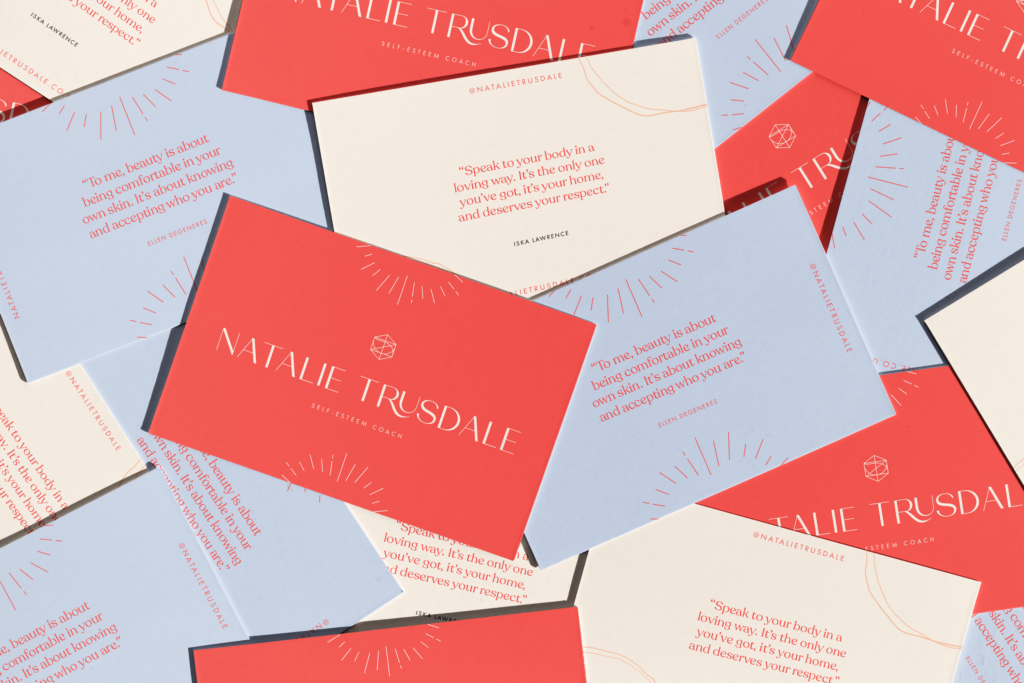
How to achieve brand consistency
I bet you’ve heard the term “brand consistency” floating about the branding world. But what exactly is it?
When you are being consistent in branding, it helps you to create a strong and recognisable brand that will resonate with your audience (there’s that audience thing again!)
Here are a few ways to ensure consistency in your branding:
- Use the same colours, fonts, and imagery across all platforms.
This includes your website, social media, packaging, and marketing materials that you may have. - Establish a consistent brand voice.
This includes the tone, language, and messaging used in all of your branding materials. (Thank goodness for copywriters like Ami – am I right?) - Use consistent branding in all communications.
Communications include emails, blogs, and even interacting with your clients in person. - Be consistent in your brand’s messaging.
Use the same key messages and themes across all platforms to ensure that your brand’s message is clear and consistent. - Create a style guide that outlines the specifics of your brand.
From colours, fonts, imagery, and messaging, this style guide can be leveraged for all of your branding materials. This ensures that everyone in your team (No team? No problem! It’s still worth having a style guide to keep you on track!) and those involved in creating your brand are all singing from the same hymn sheet.
By being consistent in your branding, you’ll be able to create that strong, recognisable brand you oh-so-crave, stand out from your competitors, and connect further with your people.

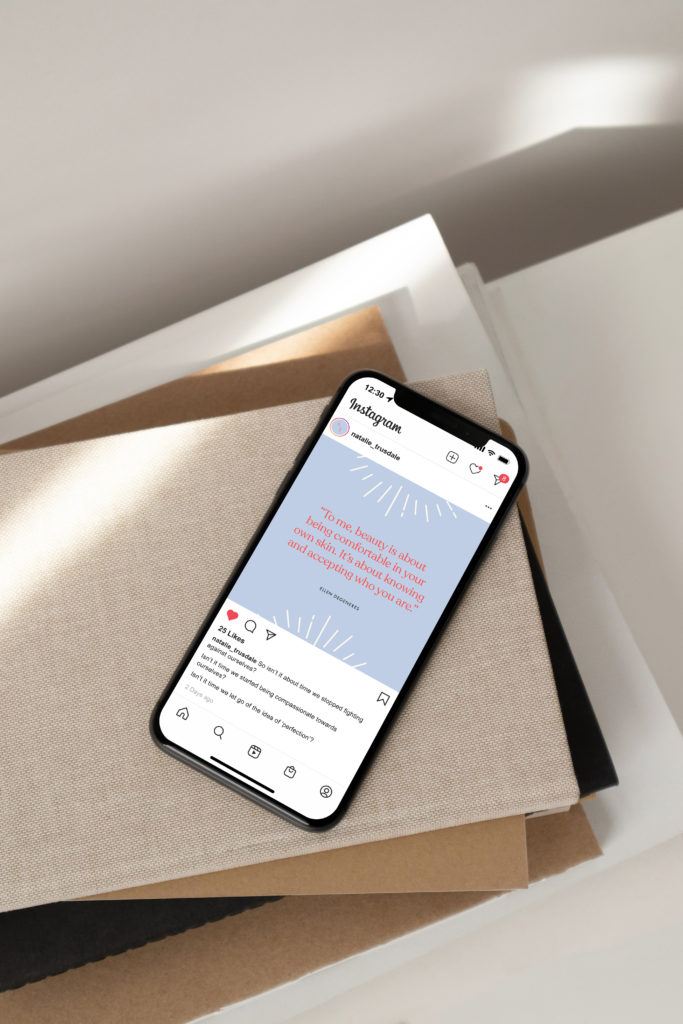
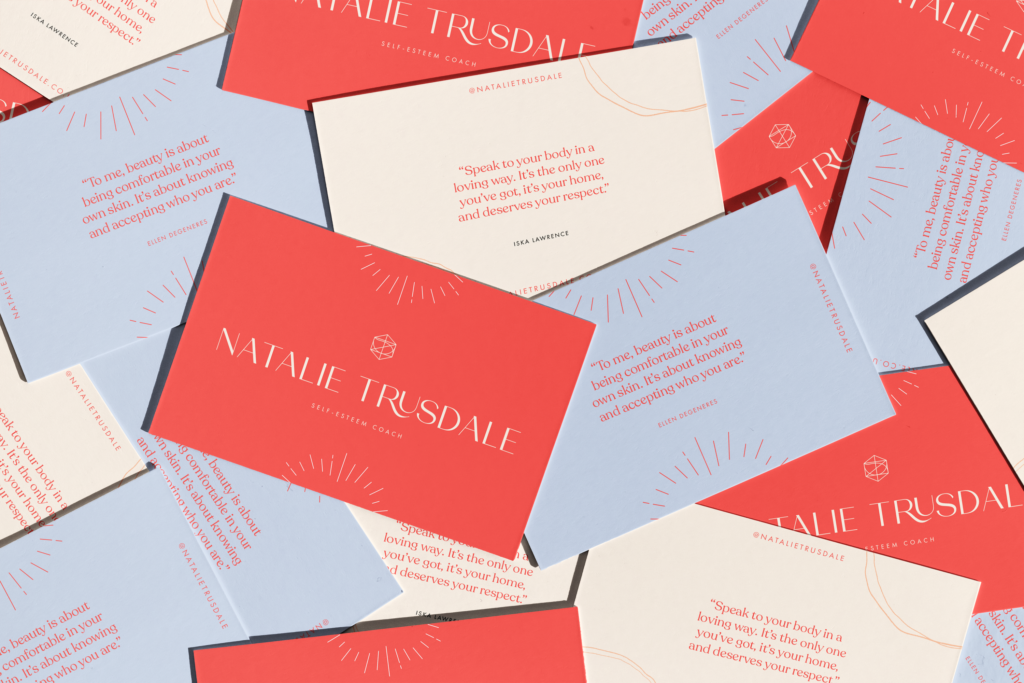
Why being unique is critical for your brand
What do I mean by “be unique?” In order to allow your brand to create connections, it has to show traits that we’d associate a human to have. Sounds crazy I know. But hear me out.
A unique brand can bring a whole host of benefits to the table:
Be a flamingo in a flock of pigeons
That’s right! Make your brand stand out from the competition. A unique brand sets you apart and helps you stand out in a crowded market. It also makes it more likely that your clients are going to remember you and recognise you when they need your offerings in their life.
Build trust and loyalty
A unique brand can help you do just this. When your audience sees that you are different from other brands, they are more likely to trust that you are offering something that has value.
Create Emotional Connection
When people feel a connection to your brand, they are more likely to be loyal to it and recommend you to others.
Clear Positioning
By being unique, you’re able to identify and communicate the distinctive value you offer. That, in turn, will help you position your brand clearly. Clear brand positioning can help you reach all the right people and up-level a brand that actually converts.
Increase Brand Awareness
A brand is most likely to be remembered and talked about when it is unique. This then leads to increased brand awareness and ultimately drives more sales. And that’s the game for everyone, right?
So there we have it. A unique brand really does make all the difference. And who wouldn’t want that?

Why being authentic is critical for your brand
“Wait, isn’t this the same as being unique?” No, not really. There’s a key difference.
Let me explain.
Authenticity refers to the quality of being true to yourself, genuine and real. In terms of branding, authenticity means staying true to the core values, messaging of the brand, and being honest and transparent with your clients.
It’s so important because it allows us to build trust and credibility with our clients, and create a stronger emotional connection.

How do I know if my brand is authentic?
A brand that is authentic is often true to its mission, vision, and values. It’s transparent in its messaging and action. Clients can recognise an authentic brand because it is consistent in its overarching message and they make good on its promises. They walk the walk, not just talk the talk.
Authenticity also demands that a brand is not trying to be something it’s not, or trying to appeal to every man and his dog, but instead focuses on its audience and being loyal and attentive to them.
Creating a brand that is authentic is crucial. Without it, you’ll struggle to build a loyal customer base, increase positive word of mouth, and drive long-term growth.
Authenticity can also help improve client retention (aka repeat business) and customer loyalty.
And really, who wouldn’t want that?

The importance of being an adaptable brand
Things can evolve and change over time and, therefore, being a brand that is also adaptable is paramount to building a successful brand.
This means being open to new opportunities, and trends, and being able to pivot quickly when required.
Adaptability is important for a brand because it allows the brand to stay relevant and competitive in a constantly changing market.
It means that a brand can anticipate changes and adjust its strategy accordingly, rather than being caught off guard and left behind – literally, nobody wants that.
But being an adaptable brand doesn’t mean you change your core values and mission. Quite the opposite.
What it means is that you’re able to adapt but still remain true to your values, mission, and vision, but you’re also a brand that is open to new ideas.
This means that your brand can innovate and come up with new products, services, or ideas that align with the interest of its target audience and trends.
Doing this will help your brand stay ahead of the curve and allow you to be more responsive to your clients’ needs.
Let me give you an example: if a company notices a trend within its industry for a more sustainable product, an adaptable brand would quickly be able to shift its strategy to accommodate this trend and offer more eco-friendly options.
Crafting an adaptable brand requires being open to new possibilities and trends, being able to adjust quickly when needed, remaining relevant and competitive, anticipating changes, and responding to clients’ needs to remain competitive in the oh-so-ever-evolving market.

How being a storyteller in branding is crucial
When it comes to branding, storytelling is a term I bet you’ve heard about. Am I right?
In case you’ve been living under a rock, let me break it down for you.
Storytelling in branding refers to the use of storytelling techniques (stay with me now) to create a compelling narrative that connects with clients and helps to communicate the brand’s values, mission, and message (there are those core branding building blocks again).
Narratives can take many forms such as your brand’s origin story or even a customer testimonial.
The use of storytelling in branding allows a brand to create an emotional connection with its target audience and create a sense of identity and purpose for the brand. It can help to communicate the brand’s Unique Value Proposition (UVP).
Relatability in brand storytelling
One of the key elements of storytelling in branding is creating relatable and memorable characters, whether it’s the brand itself or clients, and using them to communicate a message. This can be achieved through a variety of mediums such as; video, podcasts, social media, and more.
Storytelling in branding can also be used to create a sense of community – a place where your clients feel at home, as well as shared values.
By sharing stories that align with the brand’s values, a brand can create a sense of belonging and connection among customers, leading to a brand that converts.
So, to cut a long story short, (get it? Waiting for the humoured laugh here!) storytelling in branding allows you to create a relatable character and create a sense of community. As well as turning into and further enhancing your brand’s values, mission, and message.
But best of all, the power of storytelling has been around for years (just think about cave paintings telling a story) and it’s something we as humans naturally connect to.
So if you’ve not weaved any stories into your brand, make sure to add that extra story sprinkle to it.
I promise it’s worth your while.
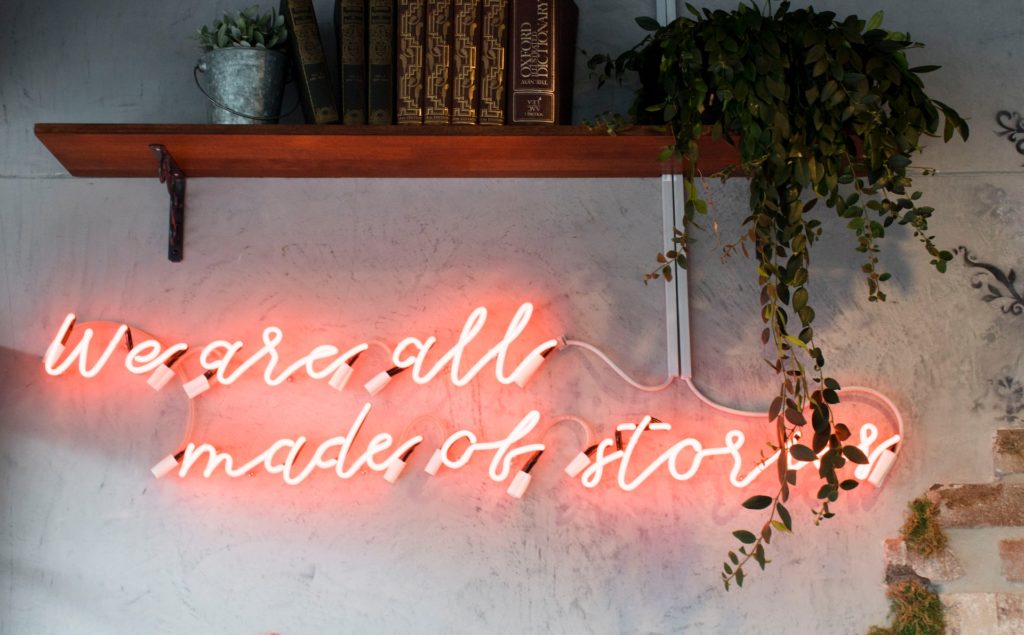
The importance of brand voice in branding
A brand voice is a personality and tone that a company uses to communicate with its audience.
It is the way in which a company expresses itself through its marketing and advertising materials, such as its website, social media posts, and email communications.
A strong brand voice helps to establish a company’s identity and create a connection with its audience. It should be consistent across all channels and touchpoints, and align with the company’s overall brand identity.
Examples of brand voice characteristics can include friendly, professional, playful, and authoritative.
When working with a copywriter (like Ami), they’ll adopt your brand’s voice to ensure they sound exactly like you rather than write in their natural writing style.
How to find your brand voice
Here are a few steps to help you decide your brand voice:
- Understand your audience
We’ve mentioned this before but it’s so important. So, let’s revisit.
Your brand voice should be tailored to your target audience, so the 1st step is to understand who they are and what they care about.
Conduct market research, surveys, or focus groups to gain insight into your customer’s demographics, behaviour, values, and pain points. - Define your brand strategy
Your brand voice should align with your overall brand identity, so it’s important to define your brand values, mission, vision, and personality. - Evaluate your competition
Look at how your competitors are communicating and what makes them stand out. Use this information to identify opportunities to differentiate your brand. - Determine the tone
Determine the tone that best aligns with your brand values and resonates with your target audience. It could be serious, funny, friendly, professional, etc. - Create a brand voice guide
Once you have a clear idea of your brand voice, create a brand voice guide that outlines the specific language, tone, and messaging that should be used across all communications. - Consistency is key
Once your brand voice is established, it’s essential to maintain consistency across all channels, platforms, and touchpoints, to reinforce and strengthen your brand identity.

The importance of brand personality
Now and then I see clients come to me with their main problem being that they’re afraid to show any personality. Which is crazy! Because those personality traits – your personality traits – make your brand so much more lovable. So what exactly is brand personality?
When we talk about “brand personality,” we have to envision a brand as we would a person. Characteristics make up how we perceive people, but they’re present in a brand.
We can often create a persona that represents our brands using tactics like Carl Jung’s Brand Archetypes. This helps us identify areas of strength, weakness, areas of passion, and how we manage this personality overall. It plays a key role in my process – as a branding strategist, I need to understand how your brand functions on a deeper level.
Amongst other things, brand personality is important because it helps us apply differentiation to our brand (that whole standing out-of-the-crowd situation) while building and enhancing emotional connections with our audience because we are more relatable.
But it also allows us to create consistency with our brand because it makes our branding and marketing efforts so much easier.
Most of all, it humanises the brand, giving it a face and voice that our clients can relate to – and that’s a pretty powerful tool.

So you’ve figured out the basic elements of what it takes to build a unique brand.
Next up:
Building a brand identity
Brand identity refers to the visual and tangible elements that make up a brand. This includes elements like:
- the logo
- colours
- typography (the fancy terminology for fonts)
… and other design elements. These elements work together to create a consistent and recognisable image of the brand in your audiences’ minds.
But let’s explore them quickly in detail:
1. Your logo
The logo is the most recognisable element of a brand identity. It’s a symbol or a mark that represents the brand and is used consistently across all branding and marketing materials.
Your logo should be simple, memorable, and easily recognised by your audience. You can also have variants too, starting with your Primary logo, which is your main logo, secondary logos, which often feature on your website, and lastly your submark. The submark is often used within your social media or as a watermark.

2. Your colours
The colours used in a brand identity help to communicate your brand’s personality and values. They can also evoke certain emotions and associations in your clients’ minds. So when picking your colours it’s handy to take this into consideration.
If you’re struggling, you can always check out my resource on “Find Your Brand Colour Palette” and signup to download it for free.

3. Typography
The choices of typography can also impact the brand’s identity, as the fonts you pick can also convey different meanings and emotions.
They can also be masculine, feminine, and gender-neutral.
Most of all, when picking a font, you should make sure that it is legible – because we don’t want our users struggling to read. Try, for example, to avoid using Script fonts as your headings.

4. Imagery
The imagery used in your brand identity can help to communicate the brand’s values and personality too, as well as appeal to your audience. Brand imagery can include anything from photography, illustration, and other visual elements.



Mix these branding components together and create magic
All of these components work together to create a consistent and recognisable portrayal of your brand in your audience’s mind.
It’s important that these elements are used consistently across all branding and marketing materials, as it will help create consistency within your brand.
Last but by no means least, we move onto:
Being visible on social
Social media can be a powerful tool for brands to connect with potential clients and build their online presence. By placing your brand on social media, and regularly posting content, a brand can increase its visibility and reach wider audiences.
As I mentioned earlier as well, social media is a great way for us to understand our audience with social media insights. But it also allows you to create ads that are founded on specific demographics and interests, giving brands the ability to reach their desired audience more effectively.
Now, does that mean you have to go out and start posting ads? No, but you definitely have the option. Putting out ads is not going to solely make your brand grow and you’ve got to be in it for the long haul.
Additionally, social media can also be used to gather customer feedback, monitor your brand mentions, and track industry trends that might be relevant to you.
But best of all, social media does give you visibility like no other. So get out there and show your authentic, relatable brand.
Because your brand deserves it.

So there we have it…
Your beginner’s guide to crafting your unique brand
If you’re new to Ami and me, you probably didn’t know that we’ve worked together a fair few times to help brands go from zero to hero.
If you’re after a website that articulates and resonates with your audience, a site that truly converts, a sales page that is going to help you pay that darn electricity bill, or anything else that combines our services: we are here and we are listening.
Check out Dear Charlie’s portfolio and Ami Writes’ portfolio today.
ABOUT THE AUTHOR:
Related
about the blogger
Ami is a creative copywriter and the proud owner of Ami Writes. She’s been casting wordy spells for over 7 years and transforming businesses into brands is her speciality. Ami’s high-key obsessed with Harry Potter and Disney - something that has seeped its way into her own brand.
Hola chica, I'm Ami.
© 2024 Ami Writes - All Rights Reserved
Site Created By Dear Charlie | Branding Studio
terms & conditions
contact
grab the spell book
services
privacy policy
blog
Portfolio
home
